Reaching as far back into Moore Township history as 1660, there are records which indicate the presence of Jesuit Missionaries passing through the country alongside the St. Clair River. The first mission stations were established along the St. Clair by French priests from Quebec who were working from the St. Ann’s mission at Detroit. These Jesuits would celebrate mass in wigwams along the river front and on Walpole Island. Religious instruction was given to the Indigenous peoples and prayers were recited, all in various dialects. Many of the children were baptized with the names of saints and often these same children would be brought up at the mission and later returned to their community to evangelize.
There is a fairly clear account from 1827 of the priests from Sandwich (now Windsor) joining St. Ann’s in missions. Father Crevier, S. J. reached the Sarnia and Corunna areas in that year. He was followed in his missionary endeavours by Father Fluelt in 1829. These priests administered the sacraments and held mass in the homes of Mooretown area pioneers Joseph LaForge and Louis Gallerneau. Between visits of the mission priests, the pioneers of the area would be cared for by the priests traveling down the river by ship. These priests would stop to hold services and pioneer children were baptized on these ships.
Bishop McDonell visited the settlers of Moore in 1836 or 1837. In Froomefield a building belonging to a Mr. Bertrand was used by the bishop to administer confirmation. This ceremony was also performed in the Mooretown home of the Gallerneau family. The bishop’s company then traveled by canoe to the first church of the county at Baby’s Point, Sacred Heart Church, which was built of stone and hewn logs. It was also Bishop McDonell who secured a free land grant from the Canadian government for the Catholic Church in 1838. By 1843 the first Roman Catholic Church of the Moore parish was built about ¾ mile north of Mooretown (later the site of the Murray farm). This first church was built by Fathers Morin, Dunnel and Pedrupe. When it was completed it was dedicated by Bishop Powers. A cemetery had already been established in 1836.
Many notable mission gatherings took place in the parish of Corunna which resulted in a large and growing church. It thus became necessary to build additional facilities to accommodate the congregation. Father Boubat was instrumental in building the new Roman Catholic Church at Corunna. The old church farm was sold and the cemetery was also moved to Corunna. On land purchased from Mr. McNeil, the new Corunna church was erected in 1862 at a cost of $5,000 – an astronomical sum for the times. The wooden church was built totally from Moore Township oak. The large St. Joseph’s church was built in a combination of the French Canadian and European Breton styles of architecture. This church was dedicated by Father Pinnsinault in 1863. The interior design of the church was also influenced by Father Boubat’s Brittany heritage. Because so many of the parishioners traveled to services by boat the church was built facing the river. The house which had been purchased from Mr. McNeil along with the church grounds served as the priests’ residence until Father Walters came in 1873 and began the construction of a new home eventually completed by Father Ouellet.
St. Joseph’s Church is the mother church for the parish of Corunna which consists of the Township of Moore. In 1888 the St. Charles Church at Courtright (the mission church of the parish) was built and dedicated.
1882 saw several improvements made to the St. Joseph’s church. These consisted of a new stone foundation, a new roof, and new decorations. Several of the notable clergy of the parish include Father Moncog, who was the first resident pastor in Corunna but who tragically lost his life when he fell through the ice while crossing the frozen river on his return from an errand of mercy to a sick woman at Algonac, Michigan.
The names of Father Walters, Mugan and McGee also stand out in the history of the parish. Father McGee built the church at Courtright. Father Mugan installed a bell at St. Joseph’s and wrote a history of the parish. The present rectory was erected between 1901 and 1915 by Father J. D. Brennan, who also improved the cemetery. Father G. Labelle must also be mentioned for his work with the youth of the community and dedication to the parish.
In 1957, an extensive renovation program was carried out on the church at a cost of $30,000. This was completed by the time of the Centennial services in 1962. Further improvements were completed by Christmas 1970. At that time the sanctuary was redesigned according to liturgical reforms. The original golden oak furniture from the sanctuary was taken apart and redesigned by European craftsmen while the altar rail was transformed into balcony balustrades. St. Joseph’s is probably the oldest continually used church in Lambton County.
In 2007, St Charles Church, Courtright, the mission church which had been constructed in 1888, was closed and the parish was amalgamated with St Joseph’s church. Several items were donated to commemorate the church and were used at the new location, including a statue, the stations of the cross, and some of the pews.
In 2012, when the congregation of St Joseph celebrated their 150th anniversary, Bishop Ronald Peter Fabbro conducted the mass and dedicated a new altar, handcrafted by Corunna parishioner Peter Devost.
As of 2020, the church is still active under the name St. Joseph and St. Charles’ Parish. In addition to regular services, the church also hosts a Knights of Columbus group, two Catholic Women’s Leagues, and regular Sunday School.

